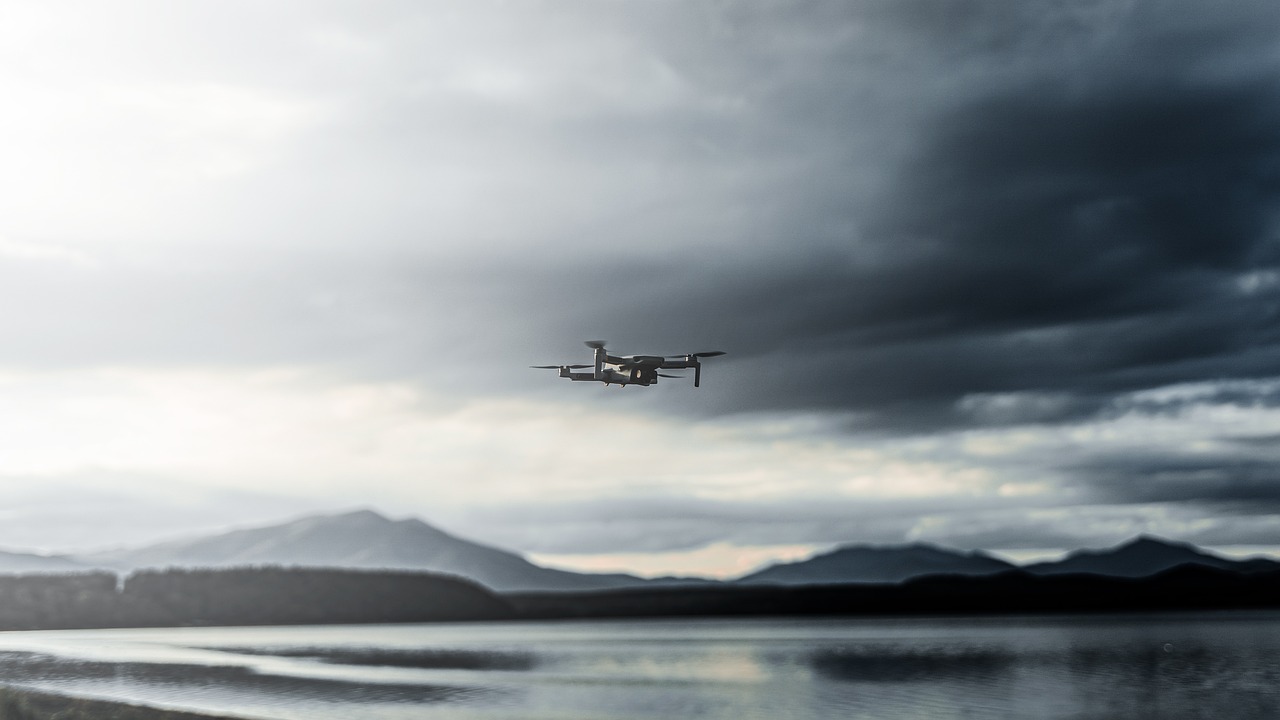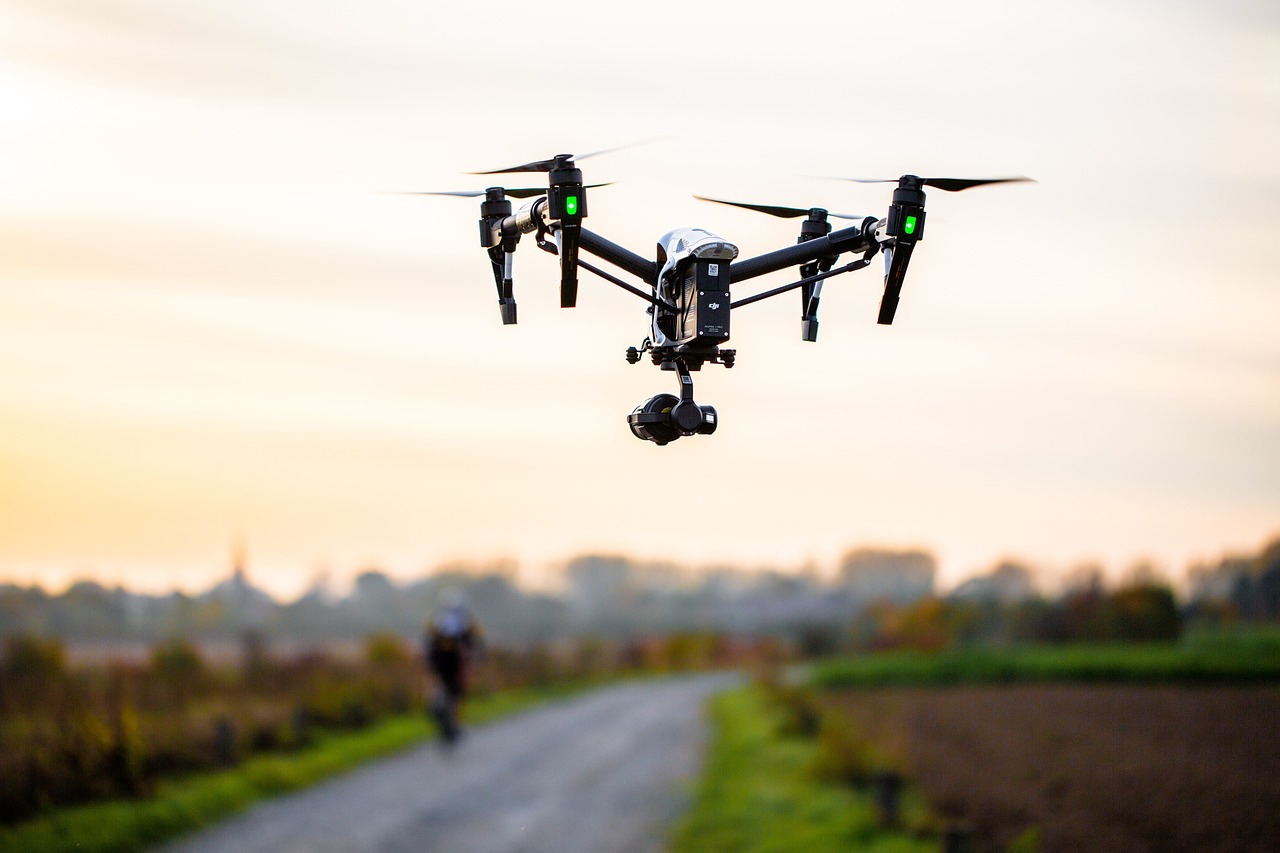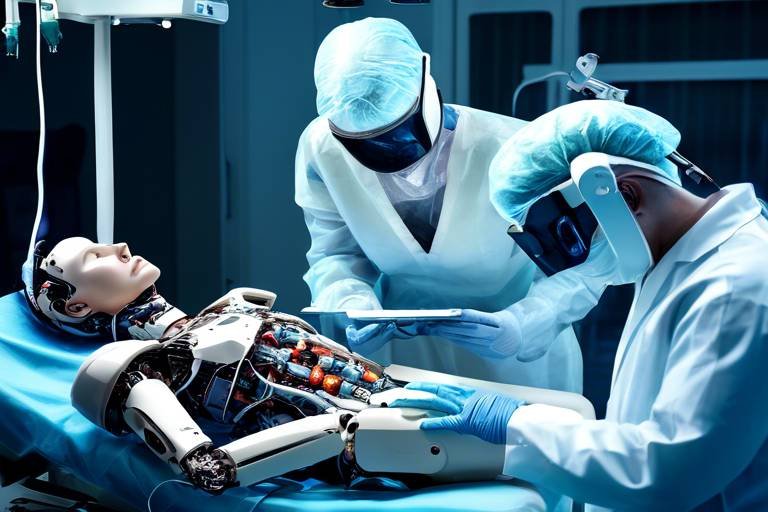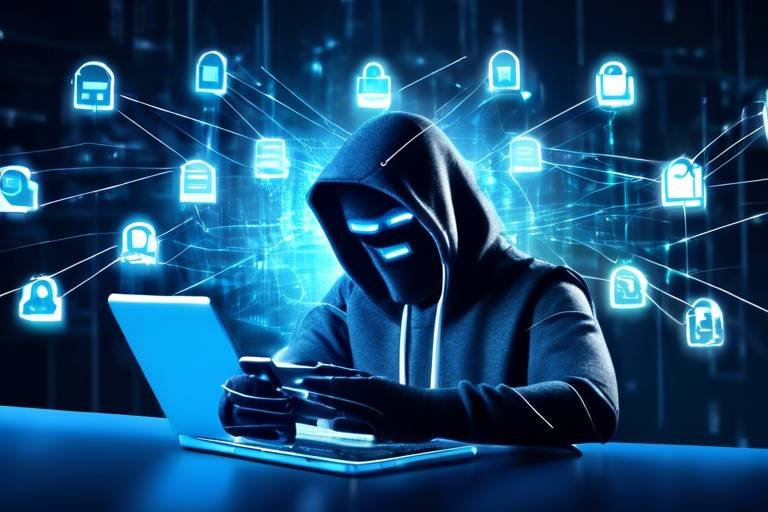How Technology Will Transform Public Safety
In today's fast-paced world, technology is not just a convenience; it’s a game changer, especially in the realm of public safety. Imagine a city where crime is not just reacted to but predicted and prevented. Think about how our streets could feel safer with the help of smart surveillance systems, data-driven policing, and real-time communication tools. This article explores the innovative ways technology is reshaping public safety, enhancing emergency response, and improving community engagement through advanced tools and strategies.
Smart surveillance systems are revolutionizing the way we think about security. With the integration of artificial intelligence and facial recognition, these systems enable law enforcement to monitor public spaces more effectively. Instead of relying solely on human observation, AI can analyze vast amounts of data to identify potential threats in real-time. This means that officers can respond to incidents with lightning speed, potentially saving lives and preventing crimes before they escalate.
Data-driven policing is another transformative approach that leverages analytics to identify crime patterns and allocate resources more efficiently. By analyzing historical data, law enforcement agencies can pinpoint crime hotspots and deploy officers where they are needed most. This proactive approach not only enhances community safety but also builds trust between police and the public, as citizens see tangible efforts to address their concerns.
At the heart of data-driven policing is predictive analytics. This method involves using historical data to forecast future criminal activities. By examining trends and patterns, police can anticipate where crimes are likely to occur, allowing them to take preventive measures. It’s like having a crystal ball that helps officers stay one step ahead of potential criminals. The result? A noticeable decrease in crime rates and an increase in community confidence.
Another powerful tool in the data-driven arsenal is crime mapping. This technology allows law enforcement and communities to visualize crime data geographically. By understanding where and when crimes occur, agencies can adjust patrol routes and develop targeted community safety initiatives. Imagine a neighborhood where residents can see a live map of crime incidents, enabling them to take proactive steps to protect themselves and their families.
Community engagement platforms are essential for fostering a collaborative relationship between law enforcement and citizens. These tools facilitate communication, allowing residents to report suspicious activities, provide feedback, and work together with police on safety initiatives. The result is a stronger, more connected community where everyone plays a role in maintaining safety.
When emergencies strike, every second counts. That’s where real-time communication tools come into play. These technologies improve coordination among first responders, enabling them to share critical information instantly. During a crisis, the ability to communicate effectively can mean the difference between chaos and order, ensuring that help arrives when it's needed most.
In recent years, drones have emerged as invaluable assets in emergency response scenarios. Equipped with cameras and sensors, these flying machines provide aerial views of disaster-stricken areas. They can deliver supplies to hard-to-reach locations, enhancing situational awareness and improving rescue operations. Imagine a drone swooping in to deliver medical supplies to a remote area after a natural disaster—this is the future of public safety.
Drones equipped with thermal imaging technology are particularly effective in search and rescue operations. They can quickly locate missing persons in challenging terrain or assess damage in disaster-stricken areas. By significantly improving response times, drones are transforming the way we approach emergencies, making it easier for first responders to save lives.
In the realm of disaster management, drones play a crucial role by surveying damage, assessing infrastructure safety, and delivering essential supplies. With their ability to provide real-time data, drones ensure that first responders have the information and resources needed to act effectively. This not only speeds up recovery efforts but also helps communities rebuild more resiliently.
As technology advances, so do the threats that come with it. Strengthening cybersecurity measures is crucial for protecting public safety systems from hacking, data breaches, and other malicious activities. A breach in a public safety system could have dire consequences, compromising the very safety protocols designed to protect citizens. Therefore, investing in robust cybersecurity is not just an option; it's a necessity.
- How does technology improve response times in emergencies?
Technology enables real-time communication and data sharing among first responders, allowing for quicker decision-making and action. - What role do drones play in public safety?
Drones assist in search and rescue operations, disaster management, and provide aerial views that enhance situational awareness. - How can communities engage with law enforcement through technology?
Community engagement platforms facilitate communication, enabling residents to report issues and collaborate with police on safety initiatives.

Smart Surveillance Systems
In a world where safety is paramount, are emerging as a game-changer in public safety. These systems harness the power of artificial intelligence (AI) and facial recognition technology to create a more secure environment. Imagine walking through a public space where cameras not only capture footage but also analyze it in real-time, identifying potential threats before they escalate. This is not science fiction; it's happening right now, and it's transforming how law enforcement agencies operate.
By integrating AI into surveillance, these systems can monitor large crowds, detect unusual behaviors, and alert authorities instantly. For instance, if an individual is behaving suspiciously in a busy area, the system can flag this behavior and notify nearby officers. This proactive approach means that law enforcement can respond more effectively, reducing the chances of incidents spiraling out of control.
Moreover, smart surveillance systems are not just about watching; they are about understanding. They can analyze patterns and trends over time, providing invaluable insights into crime hotspots. This information can be visualized in a dashboard format, allowing police departments to allocate resources more efficiently. For example, if data shows a spike in incidents in a particular neighborhood, law enforcement can increase patrols in that area, creating a visible presence that deters crime.
However, with great power comes great responsibility. The implementation of these technologies raises important questions about privacy and surveillance. Citizens may feel uneasy knowing they are being monitored constantly. To address these concerns, transparency is key. Law enforcement agencies must communicate openly about how the data is used and ensure that there are strict guidelines in place to protect individual privacy.
In addition to enhancing security, smart surveillance systems can foster community engagement. Many systems now come equipped with features that allow citizens to report suspicious activities directly through an app. This creates a collaborative environment where the community and law enforcement work hand in hand to ensure safety. When residents feel empowered to contribute, it builds trust and strengthens the bond between them and their local police.
In conclusion, smart surveillance systems represent a significant leap forward in public safety technology. As these systems continue to evolve, they promise to make our communities safer while also engaging citizens in the process. The future of public safety is bright, and with the right balance of technology and human oversight, we can create environments where everyone feels secure.
- What are smart surveillance systems? Smart surveillance systems use AI and facial recognition technology to monitor and analyze public spaces for potential threats.
- How do these systems improve public safety? They enhance security by allowing law enforcement to respond quickly to incidents and allocate resources efficiently based on crime data.
- Are there privacy concerns with smart surveillance? Yes, privacy is a significant concern. Transparency and strict guidelines are essential to protect individual rights.
- Can citizens engage with these systems? Absolutely! Many systems allow citizens to report suspicious activities through apps, fostering community involvement.

Data-Driven Policing
In today's world, the traditional methods of policing are rapidly evolving, thanks to the power of technology. is at the forefront of this transformation, utilizing sophisticated analytics to tackle crime in a more effective and efficient manner. Imagine a world where law enforcement can predict criminal activity before it even happens — that's the promise of data-driven strategies. By analyzing vast amounts of data, police departments can identify patterns and trends, allowing them to allocate resources to the areas that need it most.
This innovative approach goes beyond just crime statistics; it incorporates various data sources, including social media, weather patterns, and community reports. For example, if a particular neighborhood experiences a spike in burglaries during the summer months, police can increase patrols in that area before the next peak season. This proactive method not only helps in preventing crime but also builds a sense of security within the community.
One of the key components of data-driven policing is predictive analytics. By examining historical data, law enforcement can forecast potential criminal activities. This is akin to weather forecasting — just as meteorologists use past weather patterns to predict future conditions, police can analyze crime trends to anticipate where and when crimes are likely to occur. This foresight allows for timely interventions, which can significantly reduce crime rates.
Additionally, crime mapping plays a crucial role in this process. Utilizing geographic information systems (GIS), law enforcement agencies can visualize crime data on maps, providing a clear picture of where incidents are happening. This tool not only aids in strategizing patrol routes but also informs community safety initiatives. For instance, if a specific area shows a high concentration of thefts, local authorities can collaborate with community leaders to implement preventive measures, such as increased lighting or neighborhood watch programs.
Moreover, community engagement is enhanced through these data-driven approaches. When citizens see that their concerns are being addressed through targeted policing efforts, trust in law enforcement grows. Many departments have adopted community engagement platforms that allow residents to report issues, provide feedback, and collaborate with police on public safety initiatives. This two-way communication fosters a sense of partnership, making communities safer and more resilient.
In summary, data-driven policing represents a significant shift in how law enforcement agencies operate. By leveraging data analytics, predictive modeling, and community collaboration, police can not only react to crime but also proactively prevent it. This approach is not just about numbers; it's about creating safer environments for everyone. As technology continues to advance, the potential for data-driven policing to enhance public safety is limitless.

Predictive Analytics
is like having a crystal ball for law enforcement. By diving deep into historical data, police departments can spot trends and patterns that might otherwise go unnoticed. Imagine being able to forecast where crimes are likely to occur, much like predicting the weather. This approach not only enhances public safety but also allows law enforcement to allocate resources more effectively. Instead of waiting for incidents to happen, officers can be proactive, positioning themselves in areas where they're needed most.
The power of predictive analytics lies in its ability to analyze vast amounts of data. This includes everything from crime reports and arrest records to social media activity and community feedback. By examining these data points, police can identify crime hotspots and understand the underlying factors contributing to criminal activity. For instance, if a neighborhood experiences a spike in burglaries during certain months, law enforcement can increase patrols during those times, effectively deterring potential criminals.
One of the most fascinating aspects of predictive analytics is its reliance on algorithms and machine learning. These technologies can process data at lightning speed, uncovering insights that would take humans much longer to discern. As a result, police departments can respond to emerging threats in real-time. For example, if a specific area shows signs of increased gang activity, law enforcement can intervene before the situation escalates, potentially preventing violence and enhancing community safety.
However, while predictive analytics offers tremendous benefits, it also raises important questions about privacy and ethics. How do we ensure that data is used responsibly? What safeguards are in place to protect citizens' rights? These are critical discussions that must accompany the implementation of such technologies. Transparency and community engagement are essential to building trust between law enforcement and the communities they serve.
In summary, predictive analytics is transforming the landscape of public safety. By harnessing the power of data, law enforcement agencies can not only anticipate criminal activities but also foster a safer environment for everyone. As we continue to embrace these technologies, it’s vital to strike a balance between innovation and ethical considerations, ensuring that public safety measures respect individual rights while effectively preventing crime.

Crime Mapping
Crime mapping is revolutionizing how law enforcement and communities understand and address crime. By utilizing advanced geographic information systems (GIS), these tools create visual representations of crime data, allowing for a more intuitive grasp of where and when crimes are occurring. Imagine being able to see a heat map of your neighborhood that highlights areas with higher crime rates—this is the power of crime mapping!
These maps are not just pretty pictures; they are essential tools for decision-making. Law enforcement agencies can analyze crime trends over time, identifying patterns that might not be immediately obvious. For example, if a particular area sees a spike in burglaries during the summer months, police can increase patrols in that vicinity. This proactive approach not only enhances safety but also builds community trust as residents see their concerns being addressed.
Moreover, crime mapping fosters collaboration between law enforcement and the community. Residents can access these maps, making them aware of potential risks and encouraging them to report suspicious activities. This transparency helps in creating a more engaged citizenry, where everyone plays a role in public safety. For instance, community meetings can be organized to discuss crime trends highlighted on these maps, leading to collective action and solutions.
To give you a clearer picture of how crime mapping works, consider the following table that outlines its key benefits:
| Benefit | Description |
|---|---|
| Enhanced Awareness | Residents can view crime data in their area, leading to increased vigilance. |
| Resource Allocation | Police can allocate resources more effectively based on crime trends. |
| Community Engagement | Encourages collaboration between law enforcement and citizens. |
| Data-Driven Decisions | Helps law enforcement make informed decisions based on factual data. |
In summary, crime mapping is a powerful tool that enhances public safety by providing actionable insights into crime patterns. It bridges the gap between law enforcement and the community, fostering a cooperative environment where everyone is invested in maintaining safety. As technology continues to evolve, the potential for crime mapping to further improve public safety is limitless.
- What is crime mapping? Crime mapping is the practice of using geographic information systems to visualize crime data, helping law enforcement and communities understand crime trends.
- How does crime mapping benefit communities? It increases awareness of local crime, helps allocate police resources effectively, and encourages community engagement in public safety efforts.
- Can residents access crime maps? Yes, many law enforcement agencies provide public access to crime maps, allowing residents to stay informed about safety in their neighborhoods.
- Is crime mapping effective? Yes, crime mapping has proven effective in identifying crime patterns and improving response strategies, ultimately enhancing public safety.

Community Engagement Platforms
In today's world, the relationship between law enforcement and the community is more crucial than ever. have emerged as a powerful tool to bridge the gap between police departments and citizens. These platforms are not just about communication; they are about creating a collaborative environment where both parties can work together to enhance public safety. Imagine a neighborhood where residents feel empowered to report suspicious activities directly to their local police, all through a user-friendly app. This is the essence of community engagement platforms.
These platforms often incorporate features that allow citizens to report incidents, provide feedback, and engage in discussions about safety concerns. By utilizing these tools, law enforcement can gain valuable insights into the community's needs and priorities. For instance, when citizens can easily share their experiences and suggestions, police departments can tailor their strategies to address specific issues. This two-way communication fosters a sense of trust and transparency, which is vital for effective policing.
Furthermore, community engagement platforms can enhance real-time information sharing. During emergencies or ongoing investigations, these tools enable law enforcement to disseminate critical information quickly. For example, if there’s a missing person in the area, a community engagement platform can send alerts to residents, asking for their assistance in locating the individual. This not only speeds up the response time but also encourages community members to actively participate in safety efforts.
Another significant aspect of these platforms is their ability to gather data and analyze community trends. By tracking user interactions and feedback, law enforcement agencies can identify patterns that may not be immediately visible. This data-driven approach allows for more informed decision-making and helps allocate resources where they are needed most. Think of it as a digital pulse check on the community's safety concerns, enabling police to proactively address issues before they escalate.
In conclusion, community engagement platforms are revolutionizing the way law enforcement interacts with the public. By fostering open communication, facilitating real-time information sharing, and utilizing data analytics, these platforms enhance public safety and build stronger, more resilient communities. With the right tools and a commitment to collaboration, the future of public safety looks brighter than ever.
- What are community engagement platforms?
These are digital tools that facilitate communication between law enforcement and the community, allowing for reporting, feedback, and collaboration. - How do these platforms improve public safety?
They enhance communication, foster trust, and allow for real-time information sharing, which helps address safety concerns more effectively. - Can anyone use these platforms?
Yes, most platforms are designed for easy access by all community members, ensuring inclusivity in public safety efforts.

Real-Time Communication Tools
In the fast-paced world of emergency response, are becoming the backbone of effective coordination. Imagine a chaotic scene where every second counts—first responders need to share critical information instantly. This is where technology steps in, transforming how we manage emergencies. With the rise of mobile applications and communication platforms, teams can now connect seamlessly, ensuring that vital updates flow freely.
These tools enable first responders to communicate not only with each other but also with dispatch centers and other agencies involved in the operation. For instance, during a major incident, a firefighter on the ground can relay information about the situation directly to the command center, which can then make informed decisions about resource allocation and strategy. This instantaneous communication is crucial for saving lives and minimizing damage.
One of the standout features of these tools is their ability to integrate various forms of communication. Text messages, voice calls, and even video feeds can be shared in real-time, allowing for a comprehensive understanding of the situation. For example, a police officer can send a live video feed from the scene to the command center, providing a visual context that enhances decision-making. Furthermore, these tools often come equipped with GPS tracking capabilities, enabling teams to monitor the locations of personnel and resources effectively.
Moreover, the use of real-time communication tools fosters collaboration among different emergency services. Whether it's police, fire, or medical teams, everyone can stay in the loop, which is vital for coordinated efforts. This collaboration can be enhanced by utilizing platforms that allow for group chats and shared documents, ensuring that all parties have access to the same information. In essence, it creates a unified front against emergencies.
To illustrate the impact of these tools, let's take a look at a few key functionalities:
| Functionality | Description |
|---|---|
| Instant Messaging | Allows for quick text updates and information sharing among team members. |
| Video Conferencing | Enables real-time visual communication for situational awareness. |
| GPS Tracking | Helps monitor the location of responders and resources for better coordination. |
| File Sharing | Facilitates quick access to important documents and reports. |
As we continue to embrace these technologies, the potential for enhancing public safety becomes clearer. The ability to communicate in real-time not only improves operational efficiency but also boosts the confidence of the community in their emergency services. When citizens know that their first responders are equipped with the best tools available, it fosters a sense of security and trust.
In conclusion, real-time communication tools are revolutionizing the landscape of emergency response. They are not just technological advancements; they are lifelines that connect teams, streamline operations, and ultimately save lives. As we look to the future, investing in these tools will be crucial for any community aiming to enhance its public safety infrastructure.
- What are real-time communication tools?
These are technologies that allow emergency responders to communicate instantly and share information during critical situations. - How do these tools improve emergency response?
They enable faster information sharing, better coordination among agencies, and enhanced situational awareness, leading to quicker and more effective responses. - Are there any specific examples of real-time communication tools?
Examples include mobile apps for messaging, video conferencing tools, and platforms that integrate GPS tracking and file sharing.

Emergency Response Drones
In recent years, have emerged as a game changer in the realm of public safety. These flying machines, equipped with cutting-edge technology, are not just about aerial photography; they play a crucial role in enhancing the effectiveness of emergency services. Imagine a disaster scenario where every second counts—drones can swoop in, providing real-time information that can make all the difference in saving lives. With their ability to access hard-to-reach areas, these drones significantly improve rescue operations and situational awareness.
One of the standout features of emergency response drones is their thermal imaging capability. This technology allows first responders to detect heat signatures, making it easier to locate missing persons in various environments, whether it's a dense forest or a collapsed building. For instance, during a search and rescue operation, a drone can quickly scan a large area, pinpointing individuals who may be trapped or in distress. This not only accelerates the search process but also enhances the safety of the rescue teams by reducing the time spent in potentially hazardous conditions.
Moreover, drones are invaluable during disaster management. When natural disasters strike, such as hurricanes or earthquakes, the immediate aftermath can be chaotic. Drones can survey damage from above, providing critical data on infrastructure safety and the extent of devastation. With this information, emergency services can prioritize their response efforts, ensuring that help reaches those in dire need as quickly as possible. For example, a drone can assess the stability of bridges or buildings, guiding rescue teams on where it is safe to operate.
Additionally, drones can be equipped to deliver essential supplies, such as medical kits or food, to isolated or hard-hit areas. This capability is particularly crucial in situations where traditional transportation methods are compromised. The speed and efficiency of drone deliveries can be the lifeline that communities need during emergencies.
To illustrate the impact of drones in emergency response, consider the following table that highlights their key features and benefits:
| Feature | Benefit |
|---|---|
| Thermal Imaging | Quickly locate missing persons and assess situations in low visibility. |
| Aerial Surveying | Provides real-time data on disaster impact and infrastructure safety. |
| Supply Delivery | Delivers crucial supplies to inaccessible locations, enhancing response efforts. |
| Rapid Deployment | Can be deployed quickly to assess and respond to emergencies. |
As we look to the future, the integration of drones into emergency response systems is set to revolutionize how we handle crises. Their ability to gather and relay information swiftly not only aids in immediate response efforts but also contributes to the overall strategy for disaster preparedness. In this age of innovation, the sky truly is the limit for what drones can achieve in safeguarding our communities.
Q1: How are drones used in emergency response?
A1: Drones are utilized for aerial surveying, thermal imaging, and delivering supplies to areas that are difficult to access during emergencies.
Q2: What advantages do drones offer over traditional methods?
A2: Drones can quickly provide real-time data, access hard-to-reach locations, and deliver essential supplies faster than traditional methods, improving overall response times.
Q3: Are drones safe to use during emergencies?
A3: Yes, when operated by trained personnel, drones enhance safety by allowing responders to gather information from a distance, minimizing risks to human life.

Search and Rescue Operations
In the realm of public safety, have traditionally been fraught with challenges, often requiring extensive manpower and time. However, the integration of drones into these operations is revolutionizing the way we locate and assist individuals in distress. Imagine a scenario where a person goes missing in a dense forest or after a natural disaster; the sheer scale of the area can make traditional search methods inefficient and time-consuming. This is where drones come into play, acting as the eyes in the sky, providing critical support that can save lives.
Equipped with advanced technologies such as thermal imaging and high-resolution cameras, drones can quickly cover vast areas, identifying heat signatures and locating missing persons or survivors trapped under debris. The speed and efficiency of these unmanned aerial vehicles (UAVs) significantly enhance response times, allowing rescue teams to act swiftly. For instance, during a recent earthquake, drones were deployed to assess damage and locate individuals who were trapped. The data collected was invaluable, providing real-time updates to first responders, ensuring that help could be directed to those in need almost immediately.
Moreover, drones can access hard-to-reach areas that might be dangerous or impossible for rescue teams to enter. Consider a scenario where a hiker falls into a ravine; sending a team down could pose risks to the rescuers themselves. Instead, a drone can be dispatched to survey the situation, relay information back to the command center, and even drop essential supplies like water or medical kits to the stranded individual while the ground team prepares for a safe extraction.
In addition to their immediate advantages, drones offer a cost-effective solution for search and rescue operations. Utilizing UAVs reduces the need for extensive manpower and equipment, which can be particularly beneficial for smaller agencies with limited resources. The following table illustrates the differences in operational costs and efficiency between traditional search methods and drone-assisted operations:
| Aspect | Traditional Methods | Drone-Assisted Methods |
|---|---|---|
| Time Required | Hours to Days | Minutes to Hours |
| Manpower Needed | 20-50 Personnel | 5-10 Personnel |
| Cost | High (Equipment + Personnel) | Lower (Equipment + Minimal Personnel) |
| Access to Difficult Areas | Limited | High |
As we look towards the future, the role of drones in search and rescue operations is only expected to grow. With advancements in technology, including improved battery life and enhanced data processing capabilities, drones will become even more effective in critical situations. The potential for integrating AI with drone operations could further enhance their ability to analyze situations in real-time, making informed decisions that could lead to quicker rescues.
In conclusion, the implementation of drones in search and rescue operations not only enhances the efficiency and effectiveness of these missions but also embodies a significant leap forward in public safety technology. As communities continue to embrace these innovations, the hope is that even more lives can be saved, and individuals can be reunited with their loved ones faster than ever before.
- How do drones locate missing persons? Drones equipped with thermal imaging can detect body heat, allowing them to locate individuals even in challenging environments.
- Are drones safe to use in search and rescue operations? Yes, when operated by trained professionals, drones enhance safety by surveying dangerous areas without putting rescuers at risk.
- Can drones deliver supplies during rescue operations? Absolutely! Drones can carry and drop essential supplies like food, water, and medical kits to individuals in hard-to-reach locations.
- What are the limitations of using drones in search and rescue? Drones may face challenges in inclement weather, and their effectiveness can be limited by battery life and range.

Disaster Management
In today's world, where natural disasters can strike with little warning, the role of technology in disaster management has become more critical than ever. With the help of advanced tools like drones, we can enhance our response capabilities and ensure that help reaches those in need as quickly as possible. Imagine a scenario where a hurricane has just devastated a coastal town. Traditional methods of assessing damage and delivering aid can be slow and cumbersome. However, with drones equipped with high-resolution cameras and thermal imaging technology, first responders can gain a bird's-eye view of the affected areas, identifying not only the most severely impacted locations but also assessing the safety of infrastructure.
Drones can cover vast areas in a fraction of the time it would take ground teams, making them invaluable during disaster response scenarios. They can help in:
- Surveying Damage: Drones provide real-time aerial footage, allowing authorities to visualize the extent of destruction and prioritize their response efforts.
- Assessing Infrastructure Safety: By analyzing images and data collected by drones, engineers can quickly determine whether buildings and roads are safe for use or require immediate attention.
- Delivering Essential Supplies: In situations where roads are blocked or unsafe, drones can transport medical supplies, food, and other necessities to those in desperate need.
Furthermore, the integration of drones into disaster management systems allows for better situational awareness. This means that decision-makers can act based on accurate data rather than assumptions. For instance, during a wildfire, drones can identify hotspots and track the fire's movement, giving firefighters the information they need to deploy resources effectively and protect lives.
But the benefits of using drones in disaster management extend beyond immediate response. They also play a vital role in recovery efforts. After the initial response phase, drones can assist in assessing the long-term impacts of disasters, helping communities plan for rebuilding. The data collected can inform future preparedness strategies, ensuring that when the next disaster strikes, the response is even more efficient.
In conclusion, as technology continues to evolve, so too does our ability to manage disasters effectively. Drones are just one example of how innovation can transform our approach to public safety. By leveraging these advanced tools, we can not only save lives during emergencies but also build resilience in our communities, preparing them for whatever challenges lie ahead.
Q1: How do drones improve disaster response?
A1: Drones provide real-time aerial views of disaster areas, allowing responders to assess damage quickly, identify hazards, and deliver supplies where traditional methods may be hindered.
Q2: What types of technology are used in disaster management?
A2: Technologies such as drones, satellite imagery, predictive analytics, and communication tools are commonly used to enhance disaster management efforts.
Q3: Can drones be used for recovery after a disaster?
A3: Yes, drones can assist in assessing long-term damage and help communities plan for rebuilding by providing detailed data and imagery of the affected areas.

Cybersecurity Measures
As we embrace the digital age, the **importance of cybersecurity measures** cannot be overstated, especially when it comes to public safety. With the rapid advancement of technology, our public safety systems are becoming increasingly reliant on digital infrastructure. This shift, while beneficial, also exposes us to a myriad of cyber threats. Imagine a scenario where a city's emergency response system is compromised; the consequences could be catastrophic. Therefore, implementing robust cybersecurity protocols is not just a precaution—it's a necessity.
To effectively safeguard these systems, law enforcement agencies and public safety organizations must adopt a multi-layered approach to cybersecurity. This includes not only **firewalls** and **encryption** but also **regular audits** and **employee training**. After all, the human element is often the weakest link in the security chain. By educating staff on recognizing phishing attempts and other cyber threats, organizations can significantly reduce their vulnerability.
Moreover, the integration of advanced technologies such as **artificial intelligence (AI)** and **machine learning** can bolster cybersecurity efforts. These technologies can analyze vast amounts of data to identify unusual patterns that may indicate a cyber attack. For instance, if a system suddenly experiences an influx of login attempts from an unusual location, AI can flag this activity for further investigation. This proactive approach allows for quicker responses to potential threats, minimizing damage before it escalates.
In addition to these strategies, collaboration between public safety agencies and cybersecurity experts is crucial. By sharing information about emerging threats and successful defense strategies, agencies can stay one step ahead of cybercriminals. This could involve creating partnerships with tech companies that specialize in cybersecurity solutions. In fact, many cities have already established **cybersecurity task forces** that focus on developing comprehensive strategies tailored to their specific needs.
To illustrate the importance of these measures, consider the following table that outlines common cybersecurity threats faced by public safety systems and their potential impacts:
| Cyber Threat | Description | Potential Impact |
|---|---|---|
| Ransomware | Malware that encrypts data, demanding payment for decryption. | Disruption of services, loss of critical data. |
| Phishing | Fraudulent attempts to obtain sensitive information. | Data breaches, unauthorized access to systems. |
| Denial of Service (DoS) | Attacks that overwhelm systems, rendering them unusable. | Inability to respond to emergencies, public panic. |
| Insider Threats | Malicious actions taken by employees or contractors. | Data leaks, sabotage of systems. |
In conclusion, as we continue to integrate technology into public safety, our commitment to **cybersecurity** must be unwavering. By investing in advanced technologies, fostering collaboration, and prioritizing education, we can create a safer environment for everyone. The stakes are too high to ignore the threats posed by cybercriminals. After all, in a world where technology is a double-edged sword, we must wield it wisely to protect our communities.
- What are the main cybersecurity threats to public safety?
Common threats include ransomware, phishing, denial of service attacks, and insider threats. - How can public safety agencies improve their cybersecurity?
Agencies can enhance cybersecurity by implementing regular training, adopting advanced technologies, and collaborating with cybersecurity experts. - Why is employee training important in cybersecurity?
Employees are often the first line of defense; training helps them recognize and respond to potential threats effectively. - What role does AI play in cybersecurity?
AI can analyze data patterns to identify unusual activities, allowing for quicker responses to potential cyber threats.
Frequently Asked Questions
- How do smart surveillance systems enhance public safety?
Smart surveillance systems utilize advanced technologies like AI and facial recognition to monitor public spaces effectively. By analyzing real-time data, these systems help law enforcement identify potential threats and respond quickly to incidents, ultimately making communities safer.
- What is data-driven policing and how does it work?
Data-driven policing involves using analytics to understand crime patterns and allocate resources where they are needed most. By examining historical data, law enforcement can proactively address crime hotspots, which enhances overall community safety and helps reduce crime rates.
- What are predictive analytics in law enforcement?
Predictive analytics is a technique that uses historical data to forecast future criminal activities. By analyzing trends and patterns, police can anticipate potential crimes before they happen, allowing them to intervene early and improve public safety.
- How does crime mapping benefit communities?
Crime mapping tools visualize crime data geographically, making it easier for law enforcement and communities to understand crime trends. This information can guide patrol routes and inform community safety initiatives, fostering a more informed public.
- What role do community engagement platforms play in public safety?
Community engagement platforms facilitate communication between law enforcement and citizens. They allow for reporting incidents, providing feedback, and collaborating on safety initiatives, which helps build trust and cooperation in maintaining public safety.
- How do real-time communication tools improve emergency response?
Real-time communication tools enhance coordination during emergencies by allowing first responders to share information instantly. This leads to faster response times and more effective management of critical situations, ultimately saving lives.
- What are the benefits of using drones in emergency response?
Drones provide aerial views and can deliver supplies in emergency situations. Their ability to access hard-to-reach areas significantly improves search and rescue operations and enhances situational awareness for first responders.
- How do drones assist in search and rescue operations?
Drones equipped with thermal imaging technology can quickly locate missing persons or assess disaster-stricken areas. Their speed and efficiency in these scenarios greatly improve response times and increase the likelihood of successful rescues.
- What is the role of drones in disaster management?
In disaster management, drones can survey damage, assess infrastructure safety, and deliver essential supplies. This ensures that first responders have the information and resources they need to act effectively in critical situations.
- Why are cybersecurity measures important for public safety?
As technology advances, so do cyber threats. Strengthening cybersecurity measures is crucial to protect public safety systems from hacking, data breaches, and malicious activities that could compromise safety protocols and endanger communities.



















